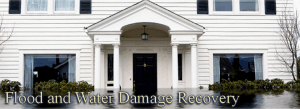Flood Damage: What You Should Know Before the Water Rises
- Apr 19, 2024 6:18 AM
- Kerry

There are two very different kinds of floods that can damage your home and in all probability, only one is covered by your homeowner's insurance. The first kind of flood damage comes from a bursted water pipe, faulty water heater or a rotted connector from your washer or dishwasher to your water supply. This kind of damage is, in fact, covered on almost all homeowner's and even some renter's insurance. The kind of flood that's not covered and usually does the most damage is the natural kind or what your insurance company would call "acts of God." Hurricanes and Tornadoes are two such disasters. While you can attain coverage for your home from these natural disasters be forewarned that you will pay a a high premium for this coverage; much more than the premiums you pay for a standard policy. The cost of the policy usually outweighs the risks for most people unless, of course, you happen to live in the Tornado belt (like Oklahoma) or in Hurricane Alley (like Florida).
Check Your Policy
Before the weather turns nasty or your water heater decides to turn on you, there are a few important things you should do. The first is to make sure that your home is properly insured in the event of a flood. Call your agent and have him or her explain your flood coverage to you in detail. The Federal Emergency Management Agency (FEMA) has declared that there are certain areas of the country which are more prone to flooding then others and they have created maps to identify these areas. According to their website, "one in four homes in Special High Risk Areas will be flooded during the term of the average 30-year mortgage, so these homeowners are required by their mortgage lenders to carry flood insurance regardless of the price." If you don't happen to live in one of the Special High Risk Areas, you should still review your homeowner's or renter's policy carefully to see what's covered and what's not in case of flood damage.
Document the Damage
Once it's safe to enter your home, photograph the damage including any areas of standing water or soaked carpet; cell phone photos are just fine. Another good indication of the severity of the flood is water climbing up the walls past the baseboards creating dark stains. This means that you have water in your floors and in your walls and that you need professional water removal and drying services. Along with your photographs begin making a list of all damaged items. Try to remember when you purchased these items and if possible how much you paid for them originally. This list will assist your insurance company greatly in speeding through your reimbursement and getting your flood damage restorationunderway sooner rather than later.
Flood Damage Restoration: What's Involved?
Naturally, one of the very first things you want to do after a flood is to contact your insurance carrier and notify them of the flood and give them a description of the extent of the damage. An adjuster from your insurance company should be available to come and inspect the damage within two to three days. It is important that you begin making a list of all damaged items and areas. We're your carpets soaked? What about wood flooring? Is there standing water there? Is there water climbing up the walls in your home leaving dark, unsightly shadows above your baseboards? These are all signs that there is still water trapped beneath your floors and they need to be replaced depending on the severity of the flood. Your adjuster should be able to help you get the ball rolling on your flood damage restorationrecommending water removal services, furniture repair services, carpet cleaning and drying services and many other helpful companies.
Better Safe than Sorry
If you have any doubts about the safety of your home, contact your local fire department. They should be able to determine whether it's safe for you to return to your home and begin living there again. They will point out things to you like restoring power. If any wiring is has been exposed to water, they may urge your to hire a electrician before flipping the switch. Once a dwelling needs flood damage restoration, you need to act quickly to prevent the growth of mold and mildew; both of which can be hazardous to your health and particularly dangerous for children's developing bodies. If a musty smell develops in your home, contact a professional water removal firm. They will arrive with industrial strength fans and industrial strength dehumidifiers to help dry and absorb the moisture left behind from the firefighter's water hoses. What's more, they have super strength wet/dry vacuums to suck up any standing water left behind. Remember to wear rubber boots and gloves when you sift through soaking wet possessions so as not to become exposed to any germs that may be present. You have to remember that water travels quickly and can easily touch every substance in your home including your toilet.
Contractors License #780181
